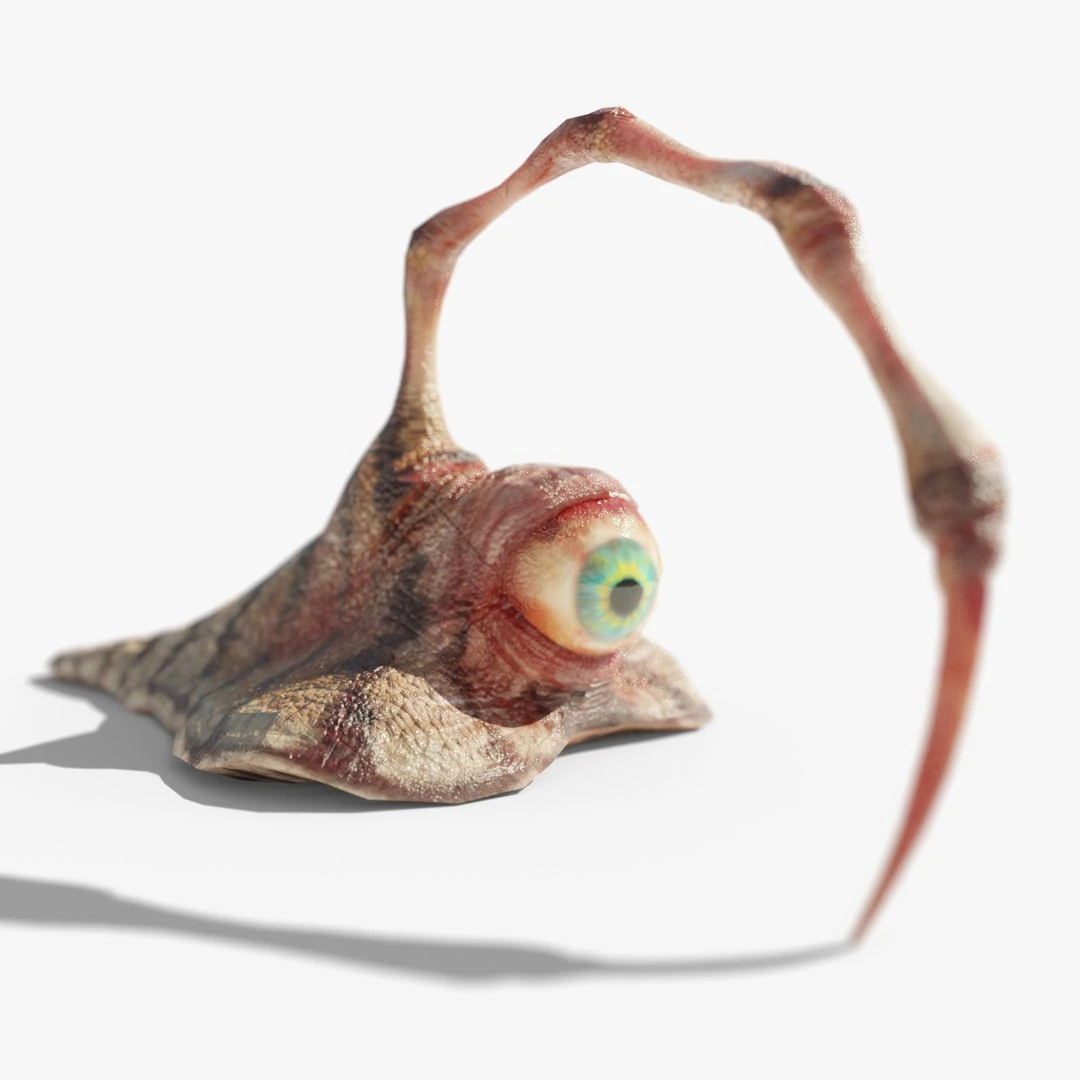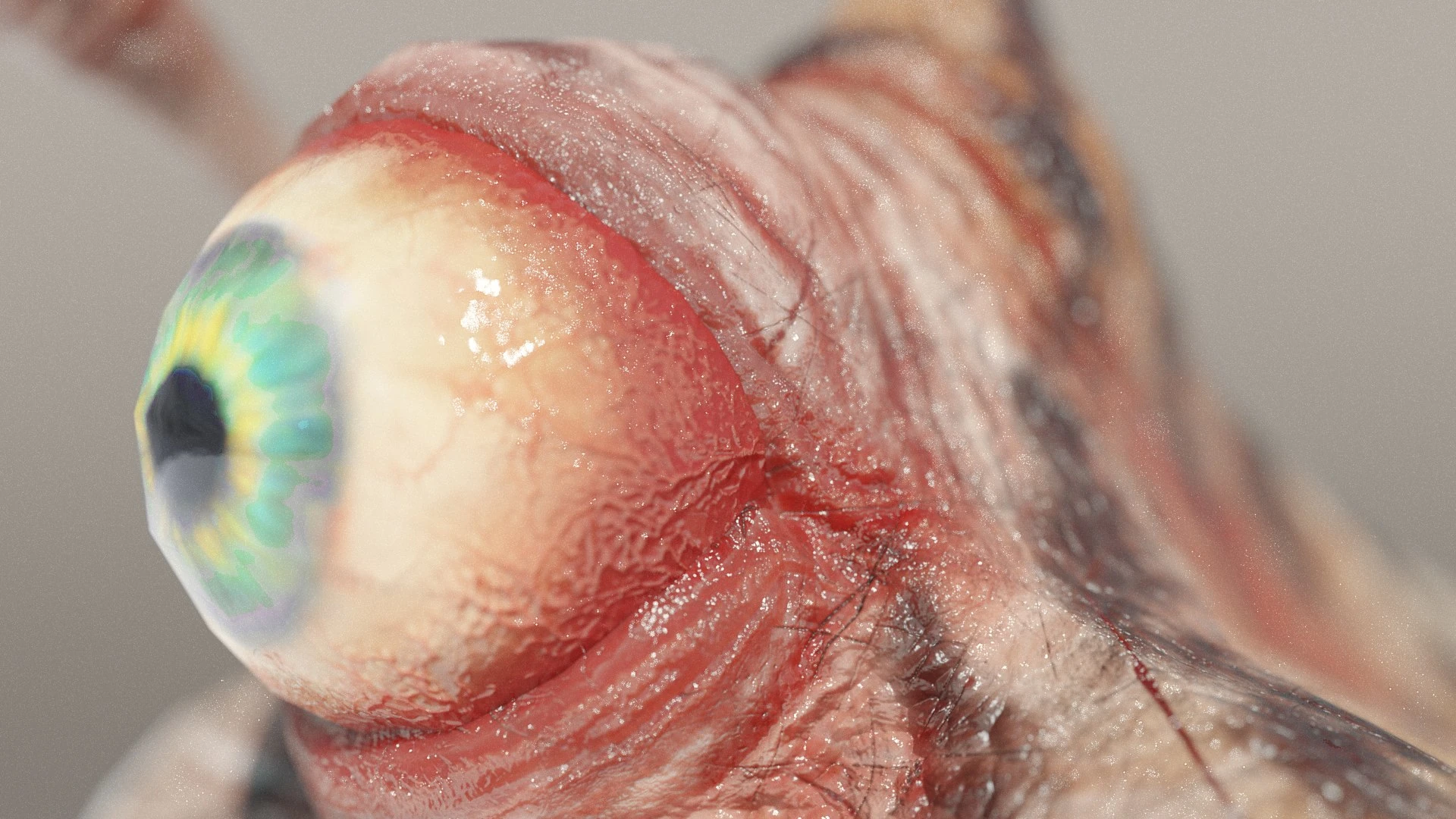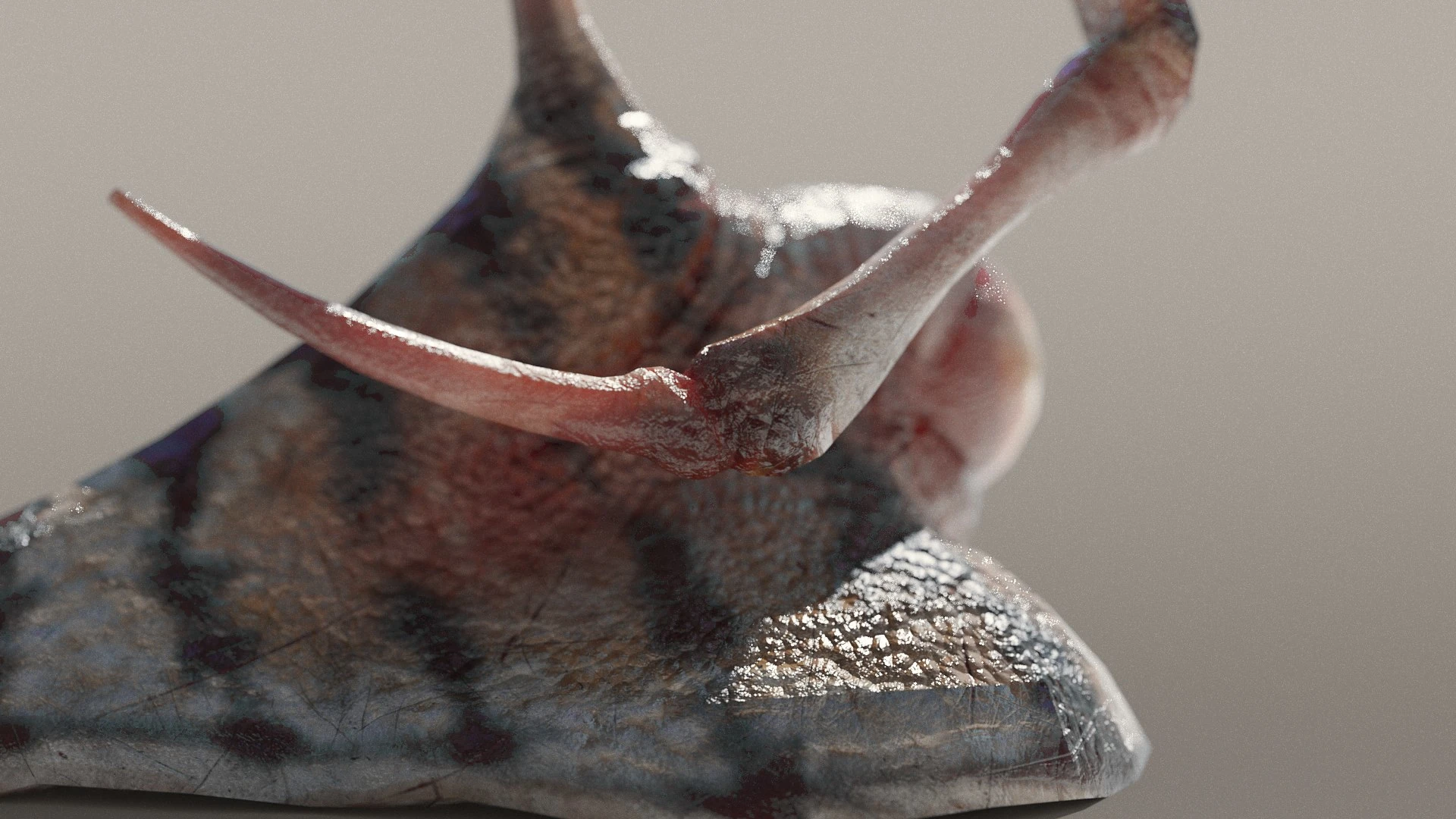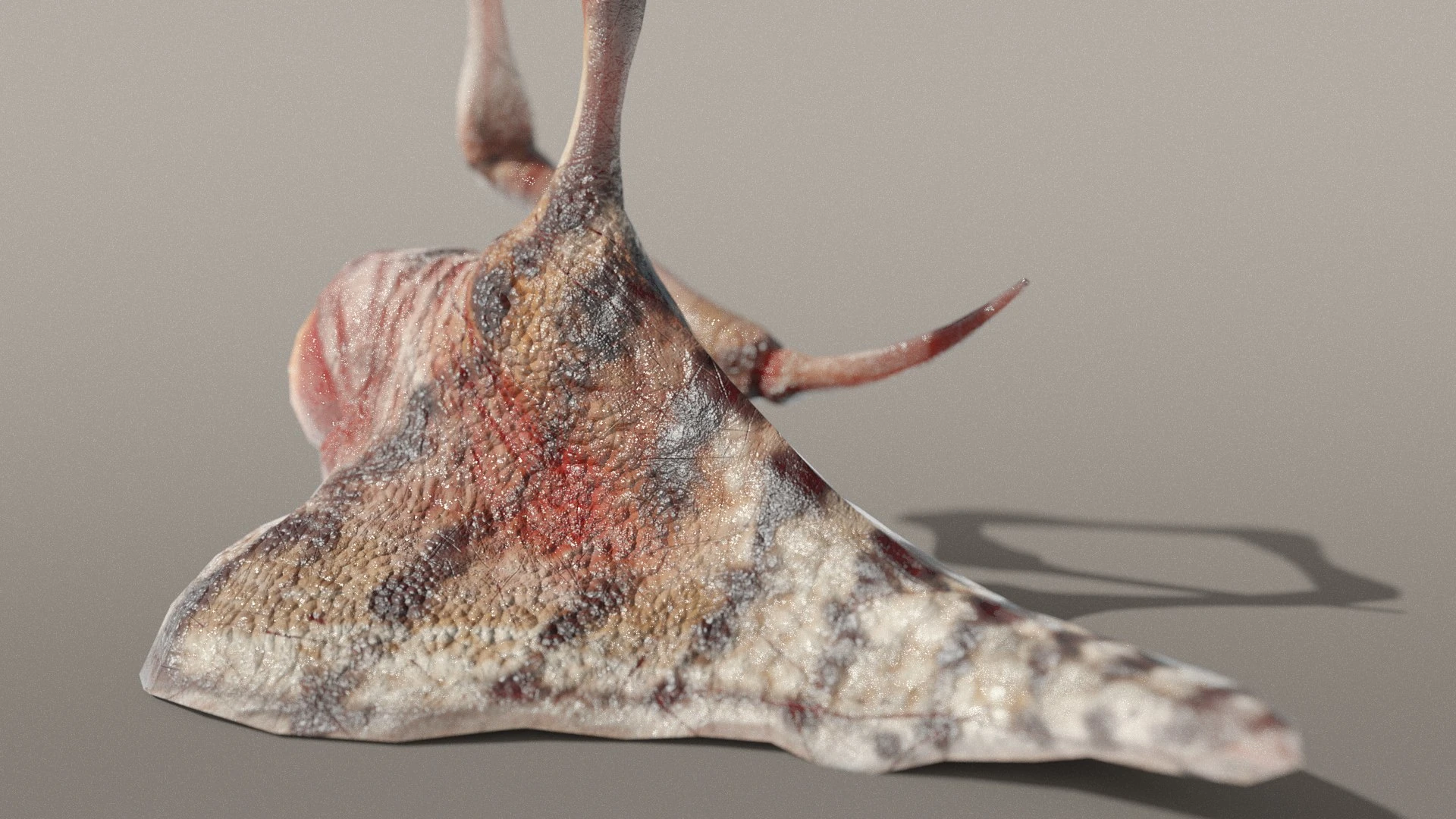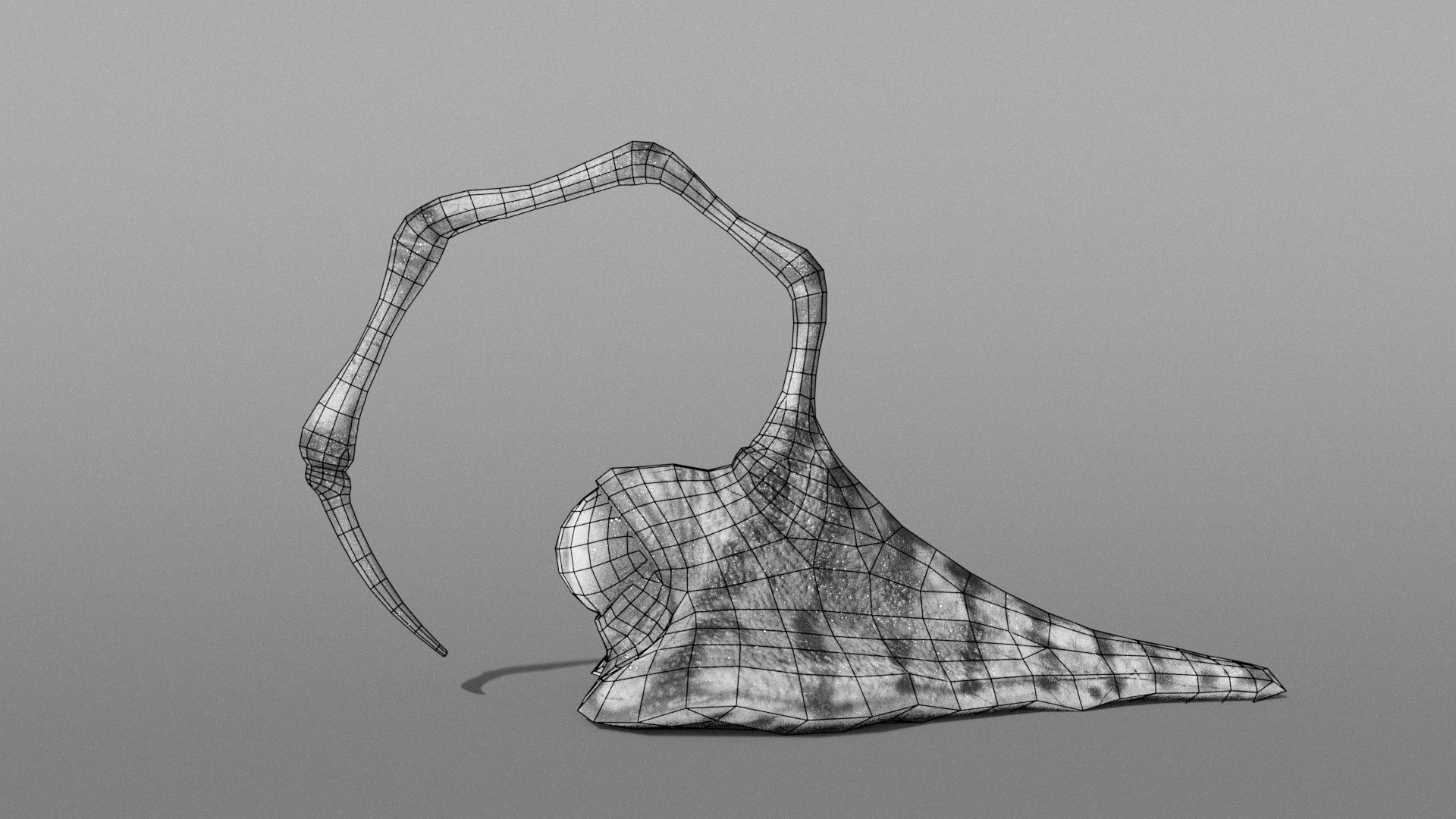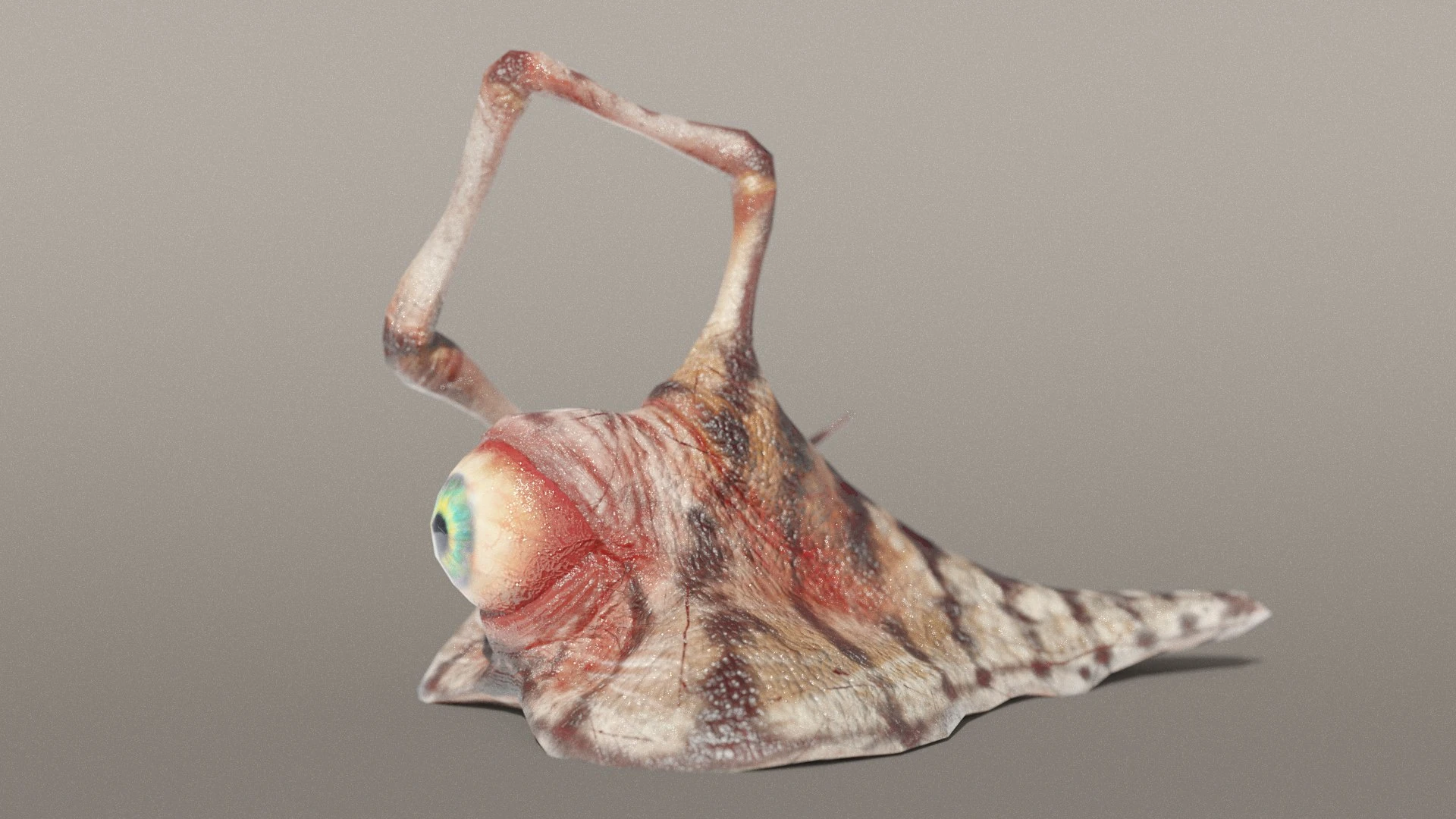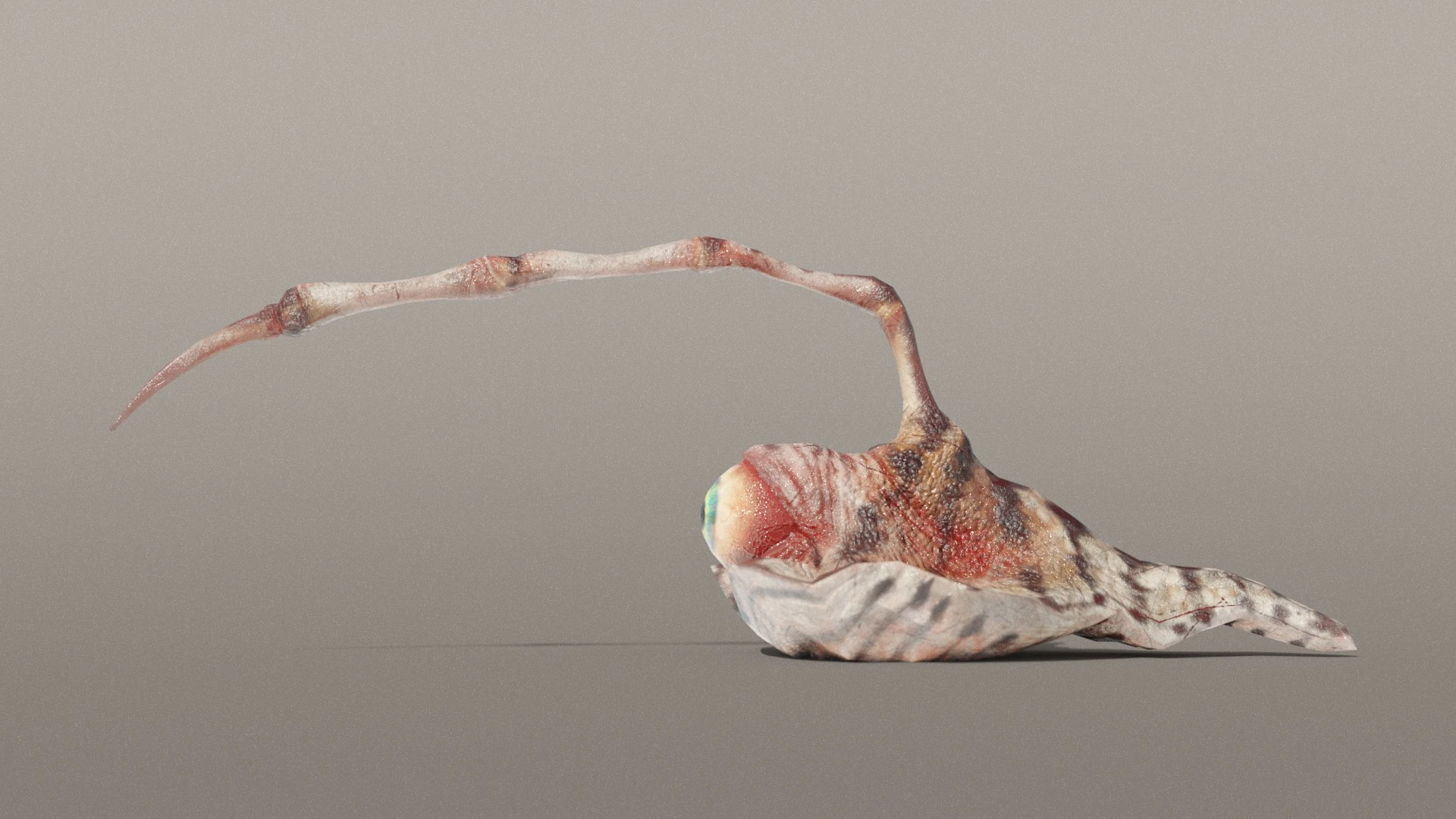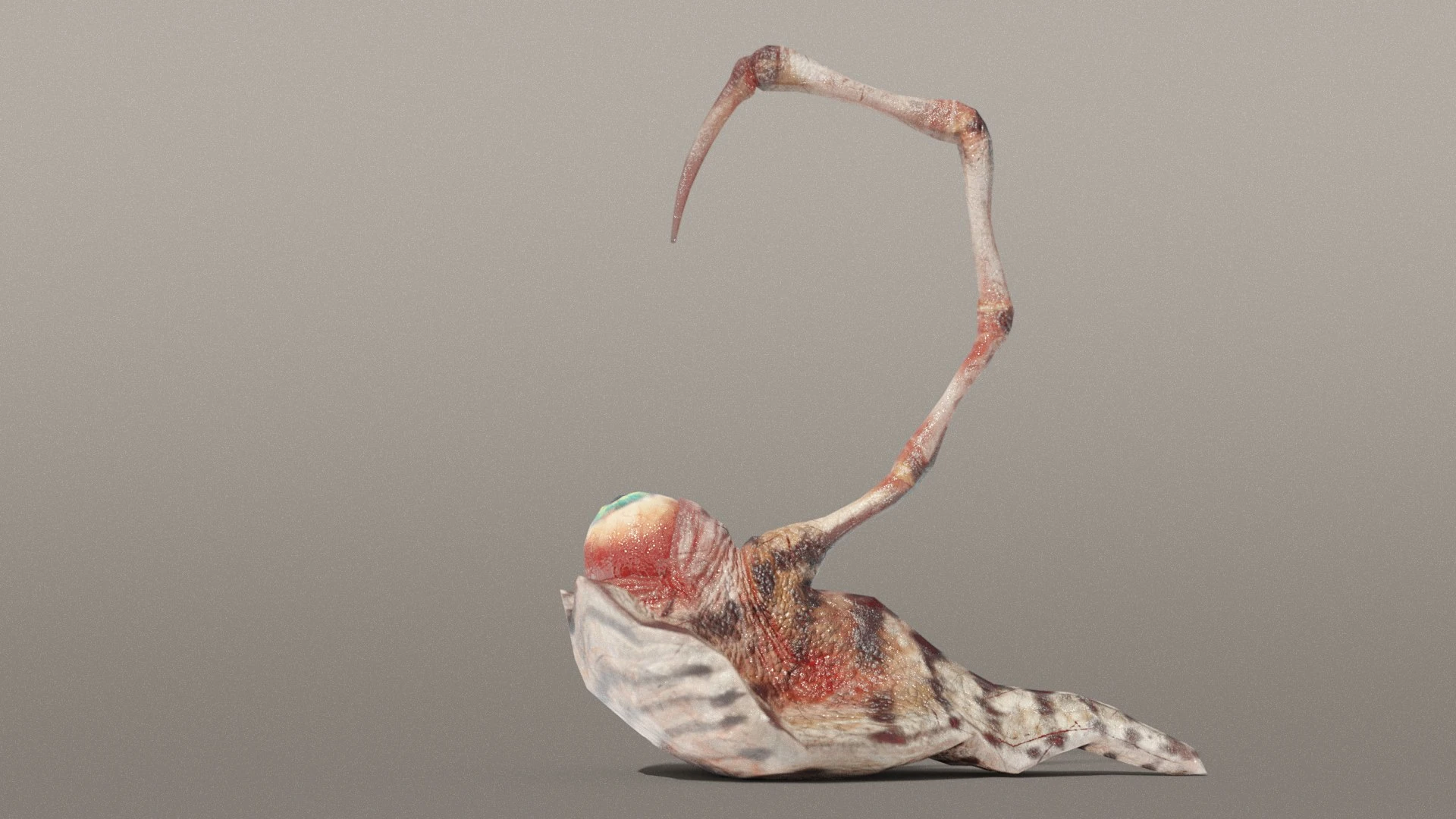Meet the Spine Eyeball Slug — part sea creature, part alien menace, and all imagination.
Built for Unity 3D and Blender 2.91, this creature combines a slug-like body, a rotating central eye, and a whip-like stinger that doubles as a weapon.
Fully rigged with inverse kinematics, it’s easy to animate for creeping, stabbing, or recoiling motion sequences.
Features
- Animated and fully rigged for IK control
- Native Blender 2.91 scene with Cycles rendering setup
- Optimized for Unity 3D or custom game engines
- Detailed 4K PBR texture maps (BaseColor, Normal, Roughness, Height, Metallic, Subsurface Scattering)
- Two material groups: Body and Eye, each with its own texture set
- Low-poly, high-detail design (997 polygons / 964 vertices)
Whether you use it as a boss creature, alien pet, or bio-mechanical experiment, the Spine Eyeball Slug brings a surreal energy to any sci-fi or fantasy environment.
Categories: Characters, Fantasy and Fictional Creatures, Mythological Creatures
Formats: Blender (.blend), FBX, OBJ
View this model on TurboSquid →
